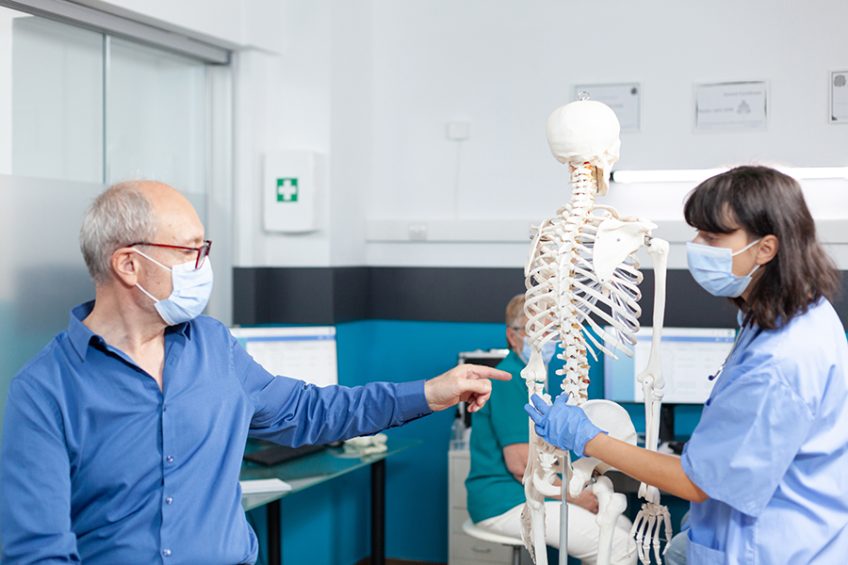The cold intensifies the pain caused by certain spinal disorders. Spondylosis, herniated disc, kyphosis, scoliosis and discopathy are just some of the diseases of the spine that can worsen with the onset of winter.
It is advisable, if you have problems with your spine, to protect your back very well from the cold air, to wear thick clothes or medical devices that protect you from the cold.
Not only does the cold aggravate the problems in such cases, but also weight lifting, physical and sports activities, excessive weight loss or excessive body weight, constipation, but also cold and flu
CONTENT:
Spinal disorders that can be more painful with winter
- Spondylosis
Even if it is not a diagnosis in itself but describes any kind of degeneration of the spine, spondylosis means pain. In addition to pain, problems classified as spondylosis can cause limited mobility of the spine, numbness in the limbs, lack of coordination, difficulty walking or abnormal reflexes.
- Scoliosis
One of the most common diseases in children and adolescents, scoliosis is a deviation in the frontal plane, in the form of “s”, of the spine.
According to the specialist, the symptoms of scoliosis range from asymmetrical spine, shoulders or pelvis, to prominent ribs and scapula on one side of the body and even respiratory problems in severe scoliosis.
- Disc herniation
One of the most common and painful diseases of the spine, herniated disc is a pathology in which a portion of the gelatinous mass moves from the intervertebral lodge “bombarding” the disc or penetrates and even breaks the outer shell (fibrous nucleus) of the disc.
Hernia can occur during a sudden, wrong movement, physical exertion with incorrect body mechanics, but in most cases, the hernia occurs as a result of a long process of wear and tear, caused by incorrect posture, multiple mini-traumas, exposure to cold and current, shocks, stress or special physical exertion.
In most cases, the herniated disc is accompanied by severe pain and the inability to perform normal activities. Be careful, there are situations where the herniated disc does not cause severe pain as it progresses.
- Lumbago
This condition occurs when the nucleus pulposus ruptures the fibrous ring and irritates the posterior ligament covered by ultrasensitive nerve endings.
- Discopathy
It is also a general term that defines the condition of the intervertebral discs regardless of their cause.
The symptoms of discopathy are pain in the spine, whether or not accompanied by a feeling of pressure.
- Lumbosciatica
Lumbar pain that starts abruptly, with severe limitation of movement and impaired sensitivity in the dermatome corresponding to the affected root, with or without motor deficit, is lumbosciatica.
The condition starts suddenly, during exertion or a few hours after exertion and radiates. It is aggravated by physical exertion, movement, coughing, sneezing and even defecation and is relieved by rest. It may be accompanied by numbness and pain in the leg. Over time, in such cases, weakness with muscle hypotrophy may occur.
Causes and treatment
Sedentary lifestyle and extra pounds are the main causes of back pain. More and more young people have these problems.
There is a statistic that shows that 90% of us have a lumbago crisis at least once in our lives and this includes children. But the most prone are those who gain extra pounds and those who stay at the office for a long time without moving and without creating a kind of muscle tone for the supporting muscles.
Most of the time the cause of the pain is a muscular one and then a period of rest with some mobilization exercises, if necessary we pass on the pharmacological side with anti-inflammatory but, in the long run. If the pain persists, it is good to see a specialist who will lead us to physiotherapy, physical therapy, therapeutic massage.
Back pain can be prevented by getting more exercise, creating a good tone for the back and abdomen muscles, exercising at the desk, and getting up from the chair every half hour. They can also be prevented by reducing the weights we lift.


